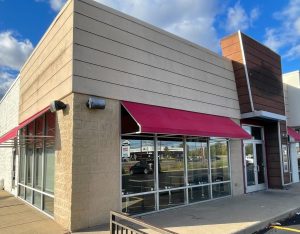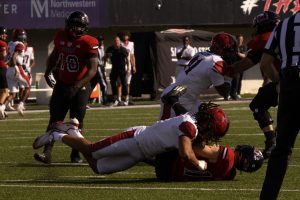Students learn about lives of disabled
October 2, 1987
In order to heighten the public’s awareness about disabled people in our society, a demonstration table and lecture were two events held yesterday as part of Unity Through Diversity Week.
Services For Handicapped Students set up the demonstration table in the Holmes Student Center which allowed students to try out some of the aids used daily by the disabled.
Services Coordinator Sue Reinhardt said, “It’s an opportunity for people to learn about the devices used by disabled individuals. There is a general lack of awareness in the population” about the disabled and some of the problems they face.
Among the items displayed at the table were a Braille writer and dictionary, a talking calculator and a closed-circuit TV designed to enlarge printed materials for visually-impaired students.
A wheelchair also was provided for students wishing to try one out.
Freshman Jorge Fonseca said, “I’d never been in a wheelchair before, and it was impossible for me to get through a pair of doors. So I could imagine for the first time how hard it is to be in a wheelchair.”
People who came by the table also were given the opportunity to have their names typed in Braille and/or to receive a Braille alphabet.
Senior Leslie DiLorenzo said she thinks it is a good idea to have such demonstrations because it allows people to see how disabled people function in society.
Understanding the handicapped person in today’s society was the theme of a lecture given in Sandburg Auditorium by NIU associate professor Elliott Lessen of the Learning, Development and Special Education Department.
Lessen taught his LDSE 200 class, a course about disabled people, in the student center and opened it up to the public.
Lessen said people with physical disabilities make up the nation’s largest minority. He said there are about 37 million people in the United States with physical disabilities (not including deaf or blind people).
e said conversely there are only 29 million black and 17 million Hispanic people in the country.
e said even though the number of disabled people is large, society still has not accepted them.
Lessen said stereotypes are a major part of the lives of disabled people. He said these stereotypes are myths, but are held by many people.
“We have a sense of what we think their (the disabled’s) human potential is,” he said. A lot of people see the disabled as being inferior, Lessen said.
Lessen said society has a hard time accepting the disabled because it is afraid. “There is a fear of what we see,” he said.
People do not like to get close to the disabled because they are unconsciously afraid that they might become disabled themselves, he said.
In order to be excepted by society a disabled person must do something extraordinary, but that is not right, Lessen said.
Disabled student Sue Haas, a quadraplegic who attended the lecture, said society will not be able look past her disability until she does something great.
Lessen said society will not be able to change until people stopped using deragatory terms and stereotypes when describing the disabled.






